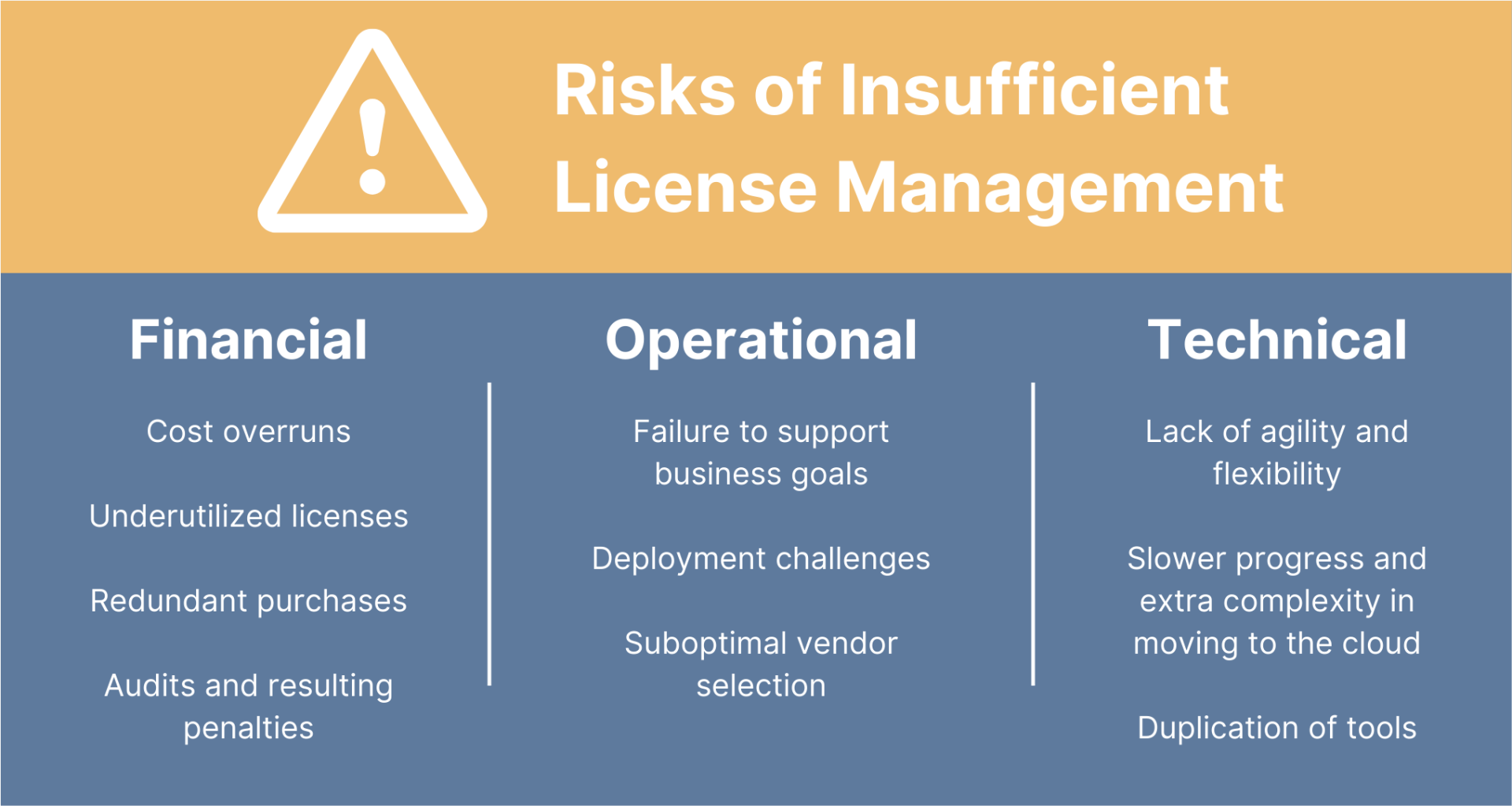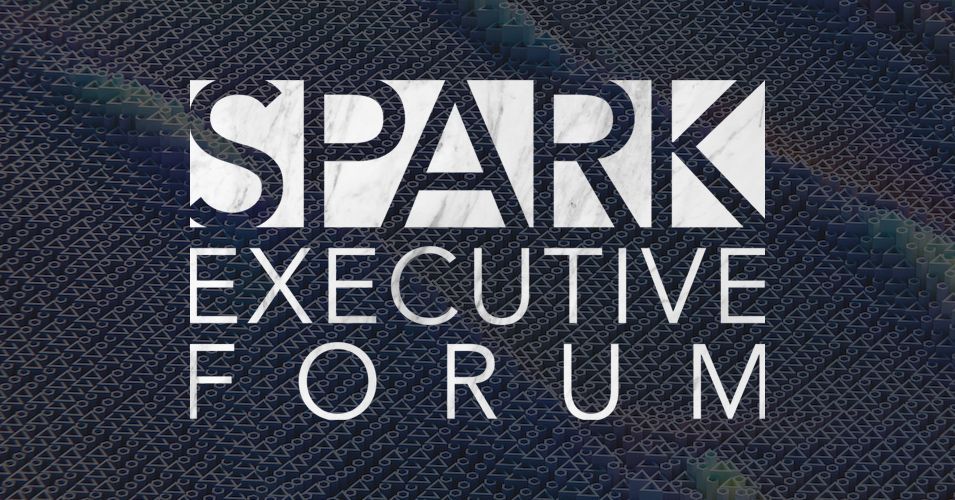The 6 Pillars of Software License Management
From Microsoft Office 365 to Oracle Java to Salesforce and beyond, software grants enterprises the power to collaborate, produce work, support sales, and much more. That’s a given. However, precisely because software is fundamental and spread across the entirety of the enterprise, it can come with substantial long-term risk.
When companies enter into enterprise license agreements with software providers, there’s often a conflict between expected economies of scale and the real-life pricing strategies of software suppliers. (We help companies work through that conflict to save money, but that’s a different story.) And when organizations struggle to manage their software consumption at a companywide level, they’re giving their suppliers a pricing advantage. Furthermore, with the rise of SaaS, the landscape has become more complicated – with some applications installed on devices while others live in the cloud, companies now need different management processes for different software.
All these financial, operational, and technical risks can add up.

To avoid these costly risks, you’ll need to implement six key principles to build a stable foundation for license management as part of your overall software management strategy. We’ve put these into practice within some of the world’s largest organizations, public and private – with massively impactful results.
1. Define a clear owner enterprise-wide
Typically, if your company has a vendor management office, license management naturally lives there – but that’s not how it plays out in every organization. It could also sit within procurement, IT, or finance – or the responsibilities could be broken up across multiple departments.
The truth is, it doesn’t matter who owns it as long as that person (or multiple persons) has an enterprise-wide view of licensing, the relationships and tools needed to create transparency, and the authority to create and influence policies, processes, and decisions.
2. Create a comprehensive planning process
The best-laid plans of mice and men may sometimes go awry, but they’re still a major upgrade over having no plan at all. The idea here is to bring all the departments together to create a comprehensive, validated view of the enterprise’s software needs from a licensing perspective – taking into account business strategy, hiring (or layoff) plans, economic headwinds, and so on. This includes forming a demand set as well as an ongoing demand-planning process, which will in turn tee up an opportunity to look at potential alternatives to software currently in use.
Doing this tends to open up a discussion about where the cost of software lives. While the assumption may be that it’s absorbed by the technology organization, it’s actually common for those costs to be distributed, with some of them charged out to individual business units. This is one area where a broader software asset management (SAM) strategy will help, fueling alignment with the operation of the business and creating options for cost allocation and agility.
3. Iron out the intake process
The intake process is the entire order of events that takes place from the moment someone says “I want this software” to the moment they receive it. It involves tools for provisioning, guardrails to ensure that the purchase makes sense for the business, a determination as to what kind of license is required, and a final approval.
In most enterprises, the simple act of formalizing this process will expose numerous gaps and risks – including licenses being misappropriated, the wrong tools or wrong SKUs being purchased, and a lack of consideration of alternatives.
4. Formalize the decommissioning process
When someone needs a piece of software for a given task or project, they ask for it – but there’s typically no such trigger once they don’t need it anymore. This lack of process leads to the accumulation of shelfware, which drains the enterprise’s resources with no payoff whatsoever. License fees and maintenance costs for unused software can add up fast if no one’s paying attention.
Thus, organizations must ask themselves: What triggers the software decommissioning process? Who’s responsible for tracking the need for decommissioning? Is there transparency into need and usage? Might some people be better off running an application in the cloud rather than an installed version – or maybe even using a different application entirely? These questions must be asked on an ongoing basis.
5. Develop the right use cases and personas
When it comes to software licensing, one of the most profound opportunities most companies tend to miss is the chance to refine their demand forecast with the right personas. This means buying the right types of licenses at the right volumes to support the employees and workflows that create business value.
Microsoft Office 365 is a great example, as it has three licensing variants available for purchase: E1, E3 and E5. The features and pricing at each level are profoundly different, which makes it vital for organizations to develop a detailed profile of who is using each license type and how. Their roles, the outcomes they create, and the requirements they may have over the term of a new agreement can help shape demand – and most importantly, minimize cost in the long run.
6. Governance
Okay, you’ve got someone who owns this. You’ve got the process and the plans. Now you need to make sure that you’re feeding the right info to the right people at the right cadence. Governance is all about giving visibility into opportunities and challenges to the right people, in real time. Who are the stakeholders who need to see info on licensing? What info do they need to see and when?
There’s a delicate balance to be achieved here – while you don’t want to bury decision makers in unnecessary data, you need to make sure that they’re well equipped with everything they need to know before renewals come due. With good governance, your organization will be better prepared to take advantage of shifts in the marketplace, new players, sourcing opportunities, discounts on renewals, and so on. The agility you’ll gain will allow you to move quickly, react quickly, and take advantage of the market conditions.
Final thoughts
All too often, if you ask a company what its license strategy is, the answer will be the name of a tool it's using. Indeed, tools such as ServiceNow are widely seen as the silver bullet for licensing. Implement the tool, light up the licensing modules, deploy some discovery capabilities, and we’ll have this whole thing totally under control, right?
Unfortunately, it isn’t that simple.
Tools are just one part of the equation. Without the right people, tightly integrated processes, and a high level of transparency, all these tools can give you is the world’s most beautiful but useless data set. Tools are useful to gain a fantastic view of the licensing in your environment and can serve wonderfully as a repository of data and catalyst of action, but they aren’t a substitute for well-planned, well-executed license management. No tool alone will solve for all the business value and risk mitigation that a high-quality, continuous license management program can deliver.
Reduce costs, increase agility, and outmaneuver the competition – it all starts by reaching out to us.















